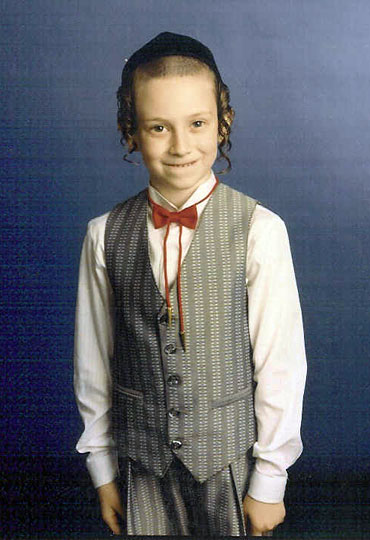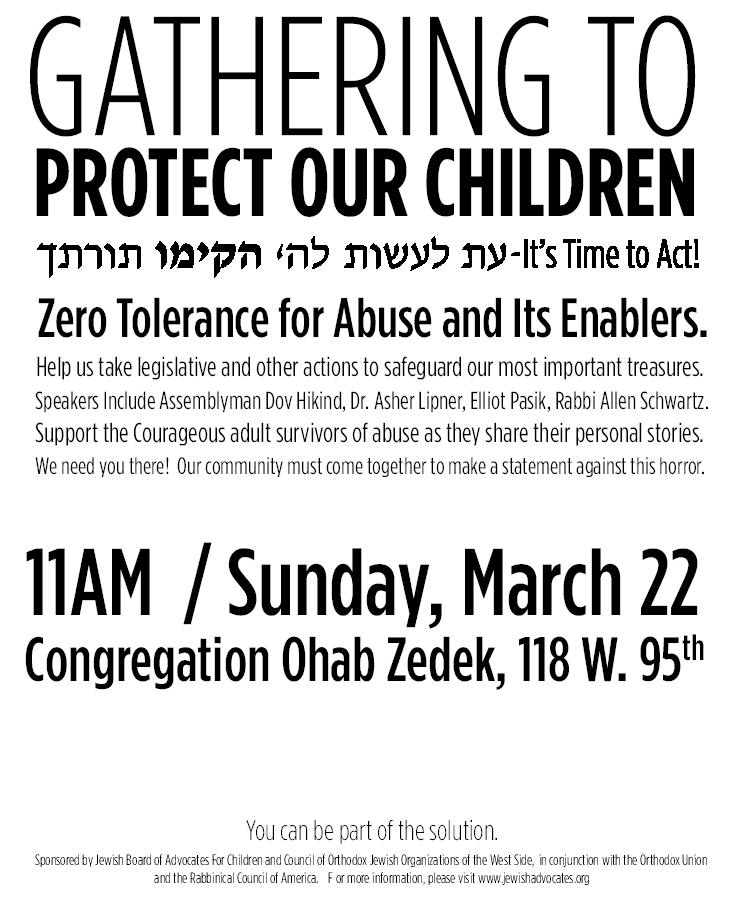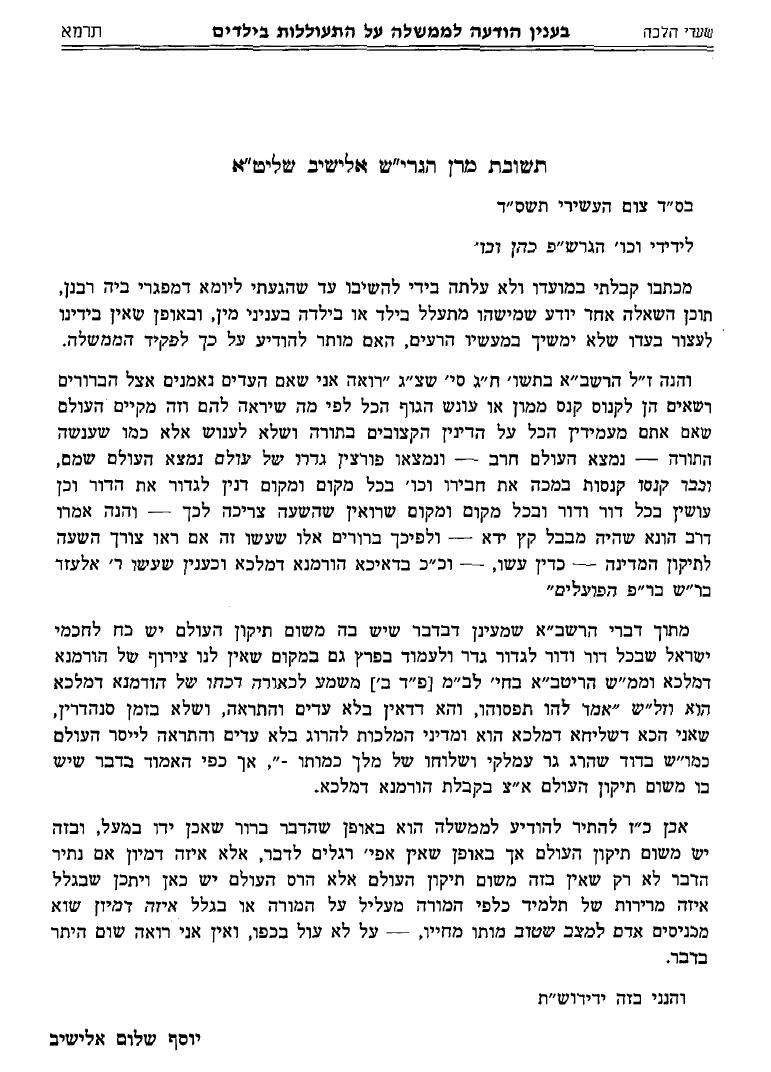 |
"Civil Liberties"
and Uncivil Lies: What the New
York Civil Liberties Union and
the Catholic League for
Religious and Civil Rights Have
in Common – An Agenda to Keep
Child Predator Identities Secret
|
By MARCI A. HAMILTON
|
|
Thursday, March 19, 2009 |
Yesterday, March 18, the New York
Assembly Rules Committee passed the
Child Victims Act (Assembly Bill
A02596/Senate Bill S02568), which will
extend the criminal and civil statute of
limitations for child sex abuse by five
years. It will also open a one-year
window of opportunity for child sex
abuse victims to go to court even if
their statute of limitations already had
expired. The next stop is the full
Assembly and then on to the Senate.
The Child Victims Act was first
introduced by Assemblywoman Marge
Markey, who has doggedly stood by the
bill. For three years, she shepherded it
through the Assembly, only to be blocked
by Sen. Joseph Bruno, now under federal
indictment. Now that Democrats are a
majority in the Senate and many support
this bill, there is real hope that
victims have a shot at justice in New
York this time around.
The
Urgent Need for States to Extend their
Statutes of Limitations and Create
"Windows" During Which Past Victims Can
Sue
As I have discussed in previous columns such
as this oneand my book Justice
Denied: What America Must Do to Protect
Its Children, we do not know the
identity of the vast majority of child
sex predators, because we have crafted a
legal system that prefers the adult
perpetrators over the child victims.
Hundreds of studies have shown that
child sex abuse victims face enormous
barriers to pursuing their perpetrators
and those who aided the perpetrators.
The same mismatch in power that
permitted the abuse to happen in the
first place severely undermines the
ability of victims to pursue those who
sexually abused them, not to mention
those in positions of power in
organizations that also permitted them
to be abused. In the nature of things,
adults are in an extremely powerful
position vis-à-vis children, but when an
adult can also exploit a position of
trust as a parent, teacher, rabbi,
priest, or Boy Scout leader, the scale
tips so strikingly that the victim can
be seriously disabled and disempowered
for life.
Until relatively recently, most states
had statutes of limitations that closed
the courthouse doors before the victim
was psychologically capable of coming
forward. The result has been that
perpetrators have continued to teach,
advise, and guide our children in
churches, synagogues, schools, and
extracurricular activities – and to do
so under legal cover. The fix is
obvious: Eliminate, or at least
lengthen, the statutes of limitations.
The New York bill has taken a moderate
route. On one hand, it only extends the
age by which victims must sue, going
forward, to 28 for civil and criminal
claims. But it also permits those who
were unfairly shut out of the courthouse
in the past by uninformed, arbitrary
statutes of limitations, for one year
from the bill's passage, to come
forward. In other words, even if their
statute of limitations expired years
earlier, they have one year from the
bill's passage to bring a civil claim.
If this bill is passed, as it looks like
it will be, the result will be that
parents in New York will know many more
names of perpetrators at the end of next
year than they do today. When California
enacted such a window in 2003, by
comparison, 300 new perpetrators were
publicly named.
In the best of all possible worlds, such
a window would have been able to be
opened in the criminal context, as well,
so these perpetrators could not only be
named but also sent to jail.
Unfortunately, the Supreme Court, inStogner
v. California, held
unconstitutional the criminal window
that California had enacted (on the
ground that the window violated the Ex
Post Facto Clause, banning
retroactive criminal laws). So today,
the only tool
we have in our legal arsenal to name
perpetrators that escaped criminal
punishment is to get victims into civil
court, where they can publicly name
perpetrators and teach the rest of us
about the risks lurking next door.
There are two primary groups that do not
want to have these perpetrators publicly
named, and they have been working hard
against the Child Victims Act. Their
ridiculous positions have not gained a
foothold, but it is still worthwhile to
expose their positions for what they
are. New York will not be the last state
to pass such legislation and the truth
needs to be inserted into the debate
early and often.
The Proponents of New York's
Statute-of-Limitations Legislation:
Fighters for Children's Rights Who
Should Be Honored
Before we turn to the two organizations
fighting the uphill battle against the
Child Victims Act, its proponents should
be named, because a new coalition of
fighters has emerged. Last fall, there
was a historic press conference at
Cardozo Law School, where I am a law
professor. There, victims from within
the Catholic Church met publicly for the
first time with victims from within the
Orthodox Jewish community. It was a
moving meeting and mutually empowering
to the two groups.
Since then, the public has been
introduced to a new organization,
Survivors for Justice, comprised of
Orthodox victims and their supporters;
and Orthodox rabbis have joined them on
the sidelines. While a handful of rabbis
joined the Catholic Conference to lobby
members last week, the powerful Orthodox
Union has issued a public statement that
it will not be opposing the Child
Victims Act. This is the largest
Orthodox Jewish group in the country and
a highly respected one. In a statement,
the Orthodox Union said that it
"generally supports the expansion of the
statute of limitations to enable victims
of sexual abuse to pursue legal claims"
and is "not opposed to this
legislation." In addition, according to
a news story by Hella Winston for The
Jewish Week, Uri L'Tzedek, another
Orthodox Jewish organization, organized
outreach to legislators as did the
Committee for Safeguarding Orthodox
Children and Am Echad. In addition, a
new student group at Cardozo -- Cardozo
Advocates for Kids -- has set up a
website that will monitor statute of
limitations developments nationally, www.sol-reform.com;
held a conference on abuse in religious
communities; and organized a student
phone-a-thon in favor of the bill.
Meanwhile, Survivors for Justice has
combined with Voice of the Faithful and
New York SNAP (Survivors Network of
those Abused by Priests) to organize
support for the bill. The groups
individually and together have been to
Albany, sent postcards to every member
of New York's Assembly, and worked
tirelessly to get the bill passed. These
are survivors (and their families and
friends) with their own issues and jobs
and families, who have chosen to make
this their single priority.
Legislators should take note that these
are the people fighting for this bill.
No one knows better than the survivors
and their families how necessary the
bill is, or how much they need it to
find some peace in their lives. Right
now, from where they sit, they live in a
society that chose to keep them out of
court -- and therefore to let their
perpetrators go to the next victim. They
are demanding that the cycle of abuse
end.
The Catholic League's Shameful Position
on the New York Bill
On the other side of the debate is the
ultra-conservative Catholic League for
Religious and Civil Rights, which has
been called the pit bull for the
conservative aims of the Roman Catholic
Church. It is led by one Bill Donohue,
whose first-ever email to me accused me
of being a Catholic-hater. We have not
corresponded much since I responded that
what I hate is child abuse and that I
actually love my Catholic husband and
children very much!
In any event, it would appear that Mr.
Donohue must not be getting a lot of
sleep lately, as the Catholic League has
carpet-bombed Catholics with one lie
after another in order to try to keep
the Child Victims Act from passing.
There is little question that the
hierarchy his organization serves
desperately seeks to keep its secrets
about childhood sexual abuse, --
including the identity of the
perpetrators. Also, and more
importantly, it seeks to continue to
cloak the identities of the bishops who
knew about earlier abuse and who created
the opportunities for further abuse. As
I discussed in a previous
column, the opening of a
statute-of-limitations window in
California led the Los Angeles
Archdiocese to agree to settle with 550
victims, in order to avoid trials. The
Archdiocese paid the amount it had
promised quickly, but it is now trying
to block the release of the files it
promised to make public as part of the
settlement, with day-by-day, seemingly
endless court challenges being mounted.
In New York, the hierarchy's fears of
the release of new secrets are likely
heightened. There, the courts have shut
down out-of-time clergy abuse lawsuits,
with the Court of Appeals most recently
pointedly stating that this is an issue
best left to the legislature. Thus,
their secrets have been fairly secure.
During the John Jay College's original
survey of dioceses on abuse, which
involved self-reporting by the bishops,
the New York Archdiocese reported one of
the lowest percentages of abusers in the
country – a report that invites
skepticism.
The Catholic League and the Catholic
Conference (the lobbyists for the
bishops in each state) have pushed two
primary arguments: (1) They say the bill
is not fair because it does not treat
public and private entities precisely
the same (and we are supposed to draw
from this that it is "targeted" at the
Catholic Church); and (2) they say that
it will bankrupt New York dioceses. The
first is mere obfuscation, and the
second is intentionally misleading.
Why the Catholic League's Objections to
the New York Statute-of-Limitations
Window Bill Are Completely Unpersuasive:
The Bill Reaches Abuse in Secular, as
Well as Religious, Contexts
First, let's consider the objection that
public entities are not equally
targeted. As noted above, New York's
Child Victims Act eliminates for one
year the statute of limitations for all
childhood sexual-abuse victims. Those
suing public entities, though, face an
additional, separate hurdle, which is
that they must file claims within 90
days. This is an administrative
limitation placed on all citizens suing
any public employee. This separate issue
needs to be taken up in successor New
York legislation and eliminated for
childhood sexual abuse victims, for the
same reasons that the statute of
limitations needs to be removed. But to
say that the bill is unfair because it
does not close every loophole at once is
sad. This bill is a huge step forward
for victims and all citizens, even if
more still needs to be done.
Moreover, this argument of targeting the
Catholic Church is just a silly attempt
to paint the Church as a victim more
deserving than the victims its clergy
and hierarchy helped to create.
Obviously, the bill will apply to
religious and secular entities outside
the RCC – for example, Jewish or other
religious organizations, and private
schools and organizations.
Note to the Catholic League and the
hierarchy: If you want to meet a group
that actually has been persecuted by our
society, spend some time with the
victims of incest who have been called
liars and expelled by their parents and
families. The Catholic League apparently
hopes that no one knows the facts of
abuse, which document that the largest
group of survivors have nothing to do
with the Church. The bill redresses
their suffering as well. The most
numerous beneficiaries of the bill are
the least organized group of victims in
our society – those abused by family or
family acquaintances, who constitute
between 70 and 80 percent of all
victims. The incest victims have a very
small voice in our society; their truths
are nearly unspeakable and when they do
speak, they risk losing everything –
family, home, and support.
The second argument – that the bill, if
passed, will "bankrupt" New York
dioceses -- lies so far outside the
truth, it is stunning that the Catholic
League expects parishioners to fall for
it. There has been no diocese that has
yet gone bankrupt as a result of having
to provide fair compensation to those it
harmed. Granted, there have been a
handful of federal bankruptcies filed,
but not because the dioceses lacked
assets. Rather, they were filed to
exploit the benefits of federal
bankruptcy law to protect assets against
those with valid claims. All of the
so-called bankruptcies led to a
settlement of claims, with the victims
receiving less than they would have from
trials, and with roughly 50% of the
monies paid from insurance proceeds and
50% from non-religiously-devoted
property.
More on point, the only bankruptcy ever
filed in response to window legislation
was that filed by the San Diego Diocese,
which was thrown out of federal
bankruptcy court. Why? Because it was
not straight from the beginning about
its massive assets and it misled the
court about its assets. None of the
other dioceses in California came close
to declaring bankruptcy in response to
the 2003 window.
The New York dioceses, like the San
Diego diocese, own scads of land utterly
unrelated to religious mission –
consisting, for example, of office
buildings, hotels, and other valuable
property. (The public should also know
that the vast majority of funds for
Catholic Charities come from the
federal, state, and local governments,
not the Church.) The Catholic League and
the hierarchy have tried this financial
scare tactic, thinking that their
believers will never investigate these
truths. Here it is.
In sum, the Catholic League and
hierarchy do not want their perpetrators
and cooperating bishops publicly named.
Rather, they seek to keep the public in
the dark about predator identities, and
face no financial dangers.
The New York Civil Liberties Union's
Disappointing Anti-Child Victim Position
– and Why It Is So Unpersuasive
Meanwhile, the New York Civil Liberties
Union apparently does not want New York
citizens to learn the identities of
perpetrators, because they are the
defendants the NYCLU would represent.
They are taking the side of the
perpetrators, making the patently
ridiculous argument that it is not
"fair" for those who preyed on children
to be named decades after their abuse
occurred, because memories are faulty.
Once again, the truth has taken a hit
from a group intent on misinforming the
public for its own ends.
The NYCLU appears to be ignorant of the
vast literature on child sex abuse over
the last couple of decades, and has not
accurately informed legislators or
anyone else about how the burdens of
proof are apportioned in such cases. In
fact, when the statute of limitations
window is opened, and the statute's term
is extended, the plaintiff still bears
the initial burden of proof and if the
plaintiff has no corroborating evidence,
then the case is over. It is rare that a
defendant has to defend himself or
herself against claims that are solely
the result of the victim's story, or the
result of "faulty memories."
In the overwhelming majority of cases,
instead, there are markers of abuse that
can corroborate a victim's story. While
the crime itself occurs usually with no
one else there, child sex abuse victims
display common characteristics that can
be traced to the abuse, such as falling
grades, depression, sexual confusion,
and substance abuse. There is also
evidence to be adduced about the
availability of the victim to the
perpetrator. For example, did the
perpetrator call the child out of class
on a regular basis for private
"counseling" sessions? With respect to
organizations, there are also employee
files that often prove that the
organization knew about the
perpetrator's dangerous predisposition
toward children, but did nothing. That
is true of the Catholic Church, with its
"secret archives," which so often
provide all the information anyone would
need to know the hierarchy's role in
crafting the unsafe conditions that led
to the abuse.
Some of the most important corroborating
evidence, though, comes from the fact
that most abusers have multiple -- and
even, in some cases, hundreds -- of
victims. When one brave survivor can
find it within himself or herself to go
to court, more victims stand up
publicly. That has happened over and
over, regardless of the circumstances of
the abuse. When it happened in the home,
sisters or brothers or cousins or
grandchildren have raised their hands
once the first went public. When it
happened within an institution, the
other victims (who are sometimes
siblings and other family members of the
first) also have stood up. In contrast,
when the statute of limitations bars
most suits, co-victims never identify
each other and the perpetrator goes on
to the next batch. Since perpetrators do
not "age out" of abusing, they can go on
for decades. Just one victim, though,
can put a wrench in the cycle of abuse
and make the state and the country safer
for all victims and potential victims.
That is what the Child Victims Act would
do.
It is also now well-documented that it
is rare that people concoct stories of
child sex abuse. In California, there
were less than a handful of false claims
among the over-1000 claims filed. This
is just not one of those kinds of claims
(such as, for instance, a fraudulent
claim that insurance is due) that are
attractive to those who want to game the
system. Branding oneself as having been
sexually violated at a young age is
hardly attractive. Moreover, significant
studies now show that children rarely
make up such stories. They are far more
likely to be persuaded to falsely
recant, than to make them up in the
first place. The bill pending in the
Assembly will extend the criminal and
civil statute of limitations for child
sex abuse by five years. It will also
open a one-year window of opportunity
for child sex abuse victims to go to
court even if their statute of
limitations already had expired.
The NYCLU, like the ACLU, is an
institution that makes the world a worse
place for children. The NYCLU and ACLU
rarely, if ever, take the position of
the child, unless the issue is free
speech in public schools. Whether the
issue is the medical neglect of children
in faith-healing homes, or the abuse of
children in polygamous families, or the
failure to educate children in Amish or
Mennonite communities, they choose the
religious parents to the detriment of
the helpless children. It is a record
that all those in the emerging civil
rights movement for children have come
to know well, and to be deeply
disappointed by. The truth is that the
NYCLU and ACLU seem incapable of
factoring the rights of children into
the mix. The ACLU might as well be
called the Adult Civil Liberties Union.
These organizations' knee-jerk reaction
to the Child Victims Act is not only
dangerous to children and families, but
also based on outdated, inaccurate
information about the reality of
childhood sexual abuse.
Child sex abuse is a zero-sum game:
Either we choose to let the victims tell
their stories when they can, or we
choose to continue to cover up the abuse
and empower the predators. It is really
as simple as that. The lies and
misinformation coming from the Catholic
League for Religious and Civil Rights
and the New York Civil Liberties Union
are toxic to civil liberties, despite
their names.



















